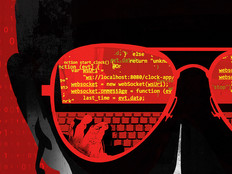Spreading Social Networking
an class="callout"> Over the past few years, social networking on the Web has exploded with many new tools and technologies. While opinions vary about the applicability of these Web 2.0 tools to government, there is one thing we can be sure of: These tools are going to affect the way government business gets done.
Over the past few years, social networking on the Web has exploded with many new tools and technologies. While opinions vary about the applicability of these Web 2.0 tools to government, there is one thing we can be sure of: These tools are going to affect the way government business gets done.
an class="callout">Over the past few years, social networking on the Web has exploded with many new tools and technologies. While opinions vary about the applicability of these Web 2.0 tools to government, there is one thing we can be sure of: These tools are going to affect the way government business gets done.
Web 2.0 tools (such as social-networking applications, blogs, wikis, RSS and mashups) are Web-based, foster social participation and offer easy access. The adoption of these tools by the public is almost unprecedented, with some social-networking sites claiming membership equal to the population of a large country. The rapid implementation of these technologies says something about how they are viewed by our constituents, and why they should be considered seriously by government entities.
These technologies have the potential for a strong upside. But they can also be used in malicious ways, and these uses have added to the conversation (and controversy) surrounding social networking. It’s clear that government will have to experiment to find solutions for identity and authorization.
There is a great deal of debate about how the Web has disrupted the environment around us and thus changed our notion of privacy. Silona Bonewald, founder of the League of Technical Voters, says that we need to focus on our rights; our privacy is already gone. She advocates that we look at the New Zealand Identity Verification System for a strong privacy-rights model.
As more data is made available, it becomes increasingly important that we clearly distinguish privacy from anonymity. Privacy and anonymity are often referred to interchangeably, but they are indeed different. Although the right to be anonymous online exists in today’s social networks, it’s difficult to remain anonymous when the infrastructure of the Internet is based on physical addressing. How the perceived anonymity of the Internet is used may have consequences.
If government is going to adopt social-networking technologies and embrace Web 2.0, it needs to differentiate between privacy and anonymity and determine what the rules will be ahead of time. State and local organizations will need to be open about what they intend to accomplish and how they are going to do so. The trust that it will take for this to work is a two-way street: government trusting citizens and citizens trusting government. Many of the social-networking sites that have been built with these new tools have mechanisms for protecting privacy — but no system is perfect.
Government sees itself as an honest purveyor of information, but has yet to reconcile how it is going to provide data to citizens. Government struggles with letting go of its data and making it freely available due to fears of what might be done with the data.
Making government data available through Web-based architectures could change things in ways we can’t imagine. For example, the National Weather Service publishes all its data openly in XML. During last fall’s wildfires in California, mashups assembled data from a variety of sources to keep citizens informed. What’s more, the American Library Association has an interesting implementation of a wiki called GODORT (Government Documents Round Table) that promotes the participation of a wide audience.
Web 2.0 technology holds great promise for helping government to engage its constituents. Government must reconcile the issues of identity, privacy and data usage to further implement these technologies.
Web 2.0 in Action
Tom Shepherd, executive officer of the Iowa Department of Administrative Services Information Technology Enterprise, shares some ways government-oriented groups and individuals use social-networking tools to communicate with the public.
- Iowa Public Interest Research Group (Iowa PIRG): Candidates used an array of social-networking sites to organize support for the 2008 Iowa caucuses.
- State of Virginia: The state provides standard RSS feeds for press releases, emergency notifications and what’s new.
- Davis County Watch: This blog is aimed at political awareness in the Utah County from which it takes its name.
- Minneapolis: Residents share input on the city’s 2008 comprehensive development plan through a wiki.
- Chicago Crime: The ChicagoCrime.org mashup combines Google Maps with the city’s crime database, allowing users to search crimes by route, ward, street, police beat and other parameters.
John Gillispie is state CIO and chief operating officer for Iowa’s Department of Administrative Services Information Technology Enterprise, executive director of the Iowa Communications Network and president of the National Association of State CIOs.






